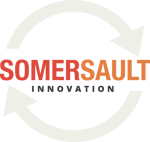https://www.salesforce.com/quotable/articles/customer-centric-sales-discovery/
If you think about how traditional sales discovery works, it usually goes something like this:
- Research prospects and review the industry
- Construct a thoughtful point of view as to why your solution is going to improve the customer’s world
- Try to find a use case that fits their industry with varied results
- Try to dazzle the customer with your solution
This old approach is centered on the vendor’s ability to show up and deliver a pitch that fits within a handful of their tried-and-true use cases. While this approach seemed to work well enough over the last couple of decades, the customer’s world is becoming more interconnected and more complex, and they need partners who can help them be trailblazers in the way they reimagine their business.
Tiffani Bova, formerly of Gartner and now Salesforce’s Global Customer Growth and Innovation Evangelist, said, “The biggest disruptor in the marketplace today is the customer, not technology.” At Salesforce, we came to realize something profound about the marketplace: Our prospective clients don’t necessarily want Salesforce at all.
What they want is a way to better connect with their own customers. It’s not until we truly understand our customer’s vision and even their customers’ vision that we can fully demonstrate the power and value of our solutions. This requires placing our customer and their customers in the middle of our approach by:
- Uncovering hidden insights about their businesses and bringing them to light, so our customers can see new ways to improve their businesses, their lives, and their customers’ lives
- Honestly and diplomatically sharing insights to help our customer think more innovatively to solve their business problems
- Inspiring and connecting with customers, so we can cocreate new opportunities and a better future — often a future they never imagined
To get here, Salesforce partnered with Somersault Innovation to redefine our sales discovery model. Instead of focusing on how Salesforce can increase sales, we reframed the opportunity to “How can we help our customers connect with their customers in a new way?” What resulted was customer-centric discovery, also referred to as CCD.
The four phases of CCD include:
- KNOW your customer: Get to know your customer’s company, industry, and your specific buyer’s role. This analysis allows you to connect with your customer in their language, identify with what they care about, and build credibility.
- BE your customer: Here is where you have a chance to walk in your customer’s shoes and even be your customer’s customer. By putting yourself in the shoes of your customer, it prepares you to have an authentic conversation and establish trust.
- CONNECT with your customer: Now you are connecting the dots between what you learned in KNOW and BE to spark a new conversation and understand their vision.
- CREATE value with your customer: It’s time to build your case for change with your customer, validating their reason to change, and making the link between your services and their envisioned future. By cocreating a plan, you’re building commitment and a solution that delights both parties.
As you may have noticed, a solution isn’t even discussed until we get to CREATE. This process is also purposely presented in a circle, as it is not necessarily linear. You may jump from one stage to another and even repeat a stage. What is most unique about this process is BE, which is driven by the principals of empathy and curiosity. Both of these help us uncover the unknown, and personally experience the challenge and needs of our customer.
As BE suggests, it’s not only mentally putting ourselves in our customer’s proverbial shoes, but recommends a few steps to actually get out of our seats and do just that — be our customer. It means engaging in the everyday experience of what it’s like to be an employee in their call center, a customer in their store, a distributer in their supply chain, and more.
For example, there is a major healthcare company with a big presence in San Francisco that wasn’t yet a Salesforce client. Instead of making yet another pitch to them, a Salesforce account executive and his inside sales rep went to one of their hospitals to walk the halls, talk to a physician, and observe the culture.
What impressed the AE and rep was how their deliberate emphasis on kindness and compassion permeated every interaction and story they heard. What also made an impression on them was the lack of exceptionalism in the technology to support this outreach and internal communication. These authentic observations and experiences are what became the foundation for their next conversation with the company, not Salesforce solutions.
BE includes shadowing and interviewing all stakeholders to look for patterns to observe even the most mundane processes for insight. It includes considering dominate environmental dynamics — for example, observing processes that drive patient compliance with strict hospital proceeds versus an experience where patients are treated like hotel guests. It can include you becoming the patient and living the experience.
BE includes observing the entire process, and making sure that you’re covering the full context of that process — for example, the moment a patient enters the emergency room to discharge and understanding where that process really begins and where it ends. In this example, does the process begin before admittance and continue after discharge?
For every reason you might give us for why you can’t do this — not enough time, they’re B2B, and so on — we’ll give you more reasons why you can. It only takes a little creativity and practice. If you really want to be a trusted advisor, you need to be a boundary spanner — shifting your intent beyond your interests (how much you’ll close this week, the status of our forecast, and more) and into the world of your customer.
Shifting our sales discovery intent and process has helped our salespeople develop authentic insights that provoke interesting conversations, versus telling our clients what to do or think. It’s no longer about who can be the smartest person in the room, it’s about the exponential intelligence you can create in partnership with your clients.
While CCD can be an intense process, the rewards are worth the hard work. How do we know? Because we’ve learned that CCD transforms customer relationships by:
- Connecting with customers: CCD is all about forging strong connections with your customers in the critical early stages.
- Building lasting relationships: CCD is just the beginning of a long journey you share with your customer.
- Shared, lasting success: When you learn more about your customers, you can help them become smarter and more successful, while helping them transform their businesses.
“We came to realize something profound about the marketplace: Our prospective clients don’t necessarily want [our solutions] at all.”
Dr. Gregory Anderson | RVP, Global Market Readiness, Salesforce






